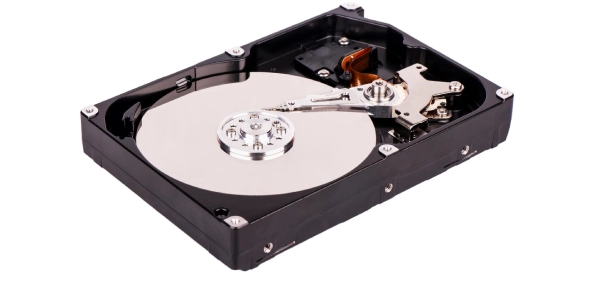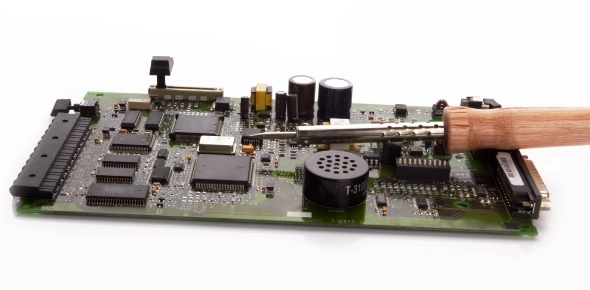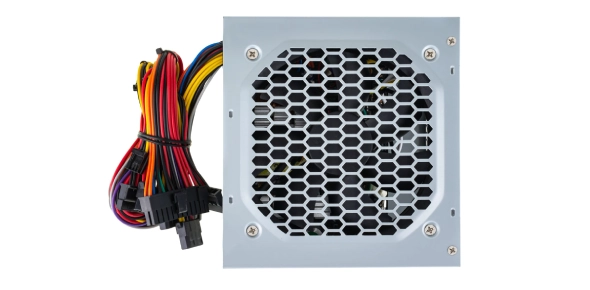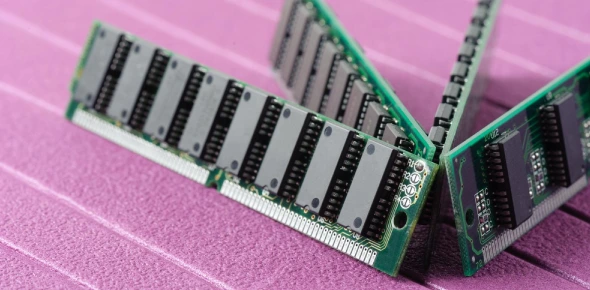Computer Quiz For Class 6 With Answers!

Are you a tech-savvy enough to be ready to explore the exciting world of computers? Our "Computer Quiz for Class 6" is here to help you learn and have fun at the same time! This quiz is packed with interesting questions designed just for you. We'll cover all sorts of cool computer stuff, from the basics of hardware and software to the wonders of the internet and the magic of coding.
This class 6 computer quiz that comes with questions and answers will make you a computer whiz in no time! We'll explore topics like the different parts of a Read morecomputer, how the internet works, and cool things you can create with a computer. If you're a computer newbie or already a tech enthusiast, our Computer Quiz for Class 6 is the perfect way to test your knowledge and discover even more about the amazing world of computers.
Computer For Class 6 Questions and Answers
- 1.
What is the on-screen work area where windows, icons, menus, and dialog boxes appear called?
- A.
Menu Bar
- B.
Desktop
- C.
Scroll Bar
- D.
Software
Correct Answer
B. DesktopExplanation
The correct answer is "Desktop" because it refers to the on-screen work area where windows, icons, menus, and dialog boxes appear. The desktop is the background area of the computer screen that allows users to interact with various software and applications. It serves as a visual workspace where users can organize and access their files, folders, and shortcuts. The desktop provides a user-friendly interface for navigating and managing the computer's resources and functions.Rate this question:
-
- 2.
What are the physical components of a computer system, including equipment such as printers and mouse devices, called?
- A.
Software
- B.
Desktop
- C.
Hardware
- D.
Monitor
Correct Answer
C. HardwareExplanation
The correct answer is hardware because hardware refers to the physical components of a computer system, such as printers and mouse devices. Software, desktop, and monitor are not the correct answers because they do not encompass the physical components of a computer system.Rate this question:
-
- 3.
What is a small image displayed on the screen to represent an object that can be manipulated by the user called?
- A.
Icon
- B.
Pointer
- C.
Window
- D.
Active
Correct Answer
A. IconExplanation
A small image displayed on the screen that represents an object that can be manipulated by the user is called an icon. Icons are commonly used in graphical user interfaces to represent applications, files, folders, or functions. They provide a visual representation of an object and allow the user to interact with it by clicking or dragging it. Icons are often used to simplify complex tasks and make the user interface more intuitive and user-friendly.Rate this question:
-
- 4.
What is an on-screen list of available functions or operations that can be performed currently called?
- A.
Tool Bar
- B.
Icon
- C.
Menu
- D.
Task Bar
Correct Answer
C. MenuExplanation
The correct answer is "Menu" because a menu is an on-screen list of available functions or operations that can be performed currently. It typically appears as a dropdown list or a series of options displayed on the screen, allowing users to select specific actions or navigate through various features of a software or application. The other options provided, such as Tool Bar, Icon, and Task Bar, are not specifically associated with displaying a list of functions or operations like a menu does.Rate this question:
-
- 5.
What shows you the contents of your floppy disk, hard disk, CD-ROM drive, and network drives?
- A.
C Drive
- B.
Desktop
- C.
My Computer
- D.
Task Bar
Correct Answer
C. My ComputerExplanation
The correct answer is "My Computer" because it is the option that best fits the description of showing the contents of various storage devices such as floppy disks, hard disks, CD-ROM drives, and network drives. "C Drive" refers specifically to the primary hard drive on a computer, "Desktop" is the user interface where files and folders are displayed, and "Task Bar" is the bar at the bottom of the screen that provides quick access to programs and features. "My Computer" is the option that encompasses all the mentioned storage devices.Rate this question:
-
- 6.
What is the folder called that provides you with a convenient place to store documents, graphics, or other files you want to access quickly?
- A.
My Documents
- B.
My Computer
- C.
Icon
- D.
Pointer
Correct Answer
A. My DocumentsExplanation
"My Documents" is the correct answer because it accurately describes a folder that is commonly found on computer systems, providing a convenient location to store various files such as documents, graphics, or other files. This folder is typically easily accessible and allows users to quickly access their important files when needed.Rate this question:
-
- 7.
What is the symbol used to point to some element on the screen, also called a "cursor," that changes shape as it is moved into different windows?
- A.
Desktop
- B.
Software
- C.
Pointer
- D.
Window
Correct Answer
C. PointerExplanation
The correct answer is "Pointer". The explanation is that the symbol referred to in the question is commonly known as a pointer. It is used to indicate the current position on the screen and is often represented by an arrow. The pointer, also known as a cursor, changes its shape depending on its location and the type of interaction it allows within different windows or applications.Rate this question:
-
- 8.
What is the place in which Windows stores deleted files called?
- A.
Task Bar
- B.
Window
- C.
Software
- D.
Recycle Bin
Correct Answer
D. Recycle BinExplanation
The Recycle Bin is the place in which Windows stores deleted files. When a file is deleted, it is not immediately removed from the system. Instead, it is moved to the Recycle Bin where it can be easily restored if needed. The Recycle Bin acts as a safety net, allowing users to recover accidentally deleted files before they are permanently deleted from the system.Rate this question:
-
- 9.
What is the process called to quit all applications and turn off the computer?
- A.
Quit
- B.
Log Off
- C.
Escape
- D.
Shut Down
Correct Answer
D. Shut DownExplanation
The process of quitting all applications and turning off the computer is called "Shut Down." This action closes all running programs, ensures all data is saved, and powers off the computer completely. It is used to conserve energy, perform maintenance, or ensure a fresh start upon the next use. Unlike "Log Off," which only signs out the current user, "Shut Down" turns off the entire system.Rate this question:
-
- 10.
What is the non-physical portion of the computer, consisting only of data such as programs, called?
- A.
Software
- B.
Window
- C.
Operating System
- D.
Task Bar
Correct Answer
A. SoftwareExplanation
The non-physical portion of a computer refers to the intangible components, such as programs and applications, that exist as data. These programs are what enable the computer to perform specific tasks and functions. Therefore, the correct answer is software, as it encompasses all the programs and applications that run on a computer.Rate this question:
-
- 11.
What is the button on the bottom left corner of the Task Bar called?
- A.
Tool Bar
- B.
Escape
- C.
Start
- D.
Recycle Bin
Correct Answer
C. StartExplanation
The correct answer is "Start" because the question is asking for the location of a button on the Task Bar, and the Start button is typically located on the bottom left corner of the Task Bar in most operating systems.Rate this question:
-
- 12.
What is the bar called that contains the Start button and appears by default at the bottom of the desktop?
- A.
Task Bar
- B.
Tool Bar
- C.
Menu Bar
- D.
High Bar
Correct Answer
A. Task BarExplanation
The taskbar is a bar that appears by default at the bottom of the desktop and contains the Start button. It provides quick access to frequently used applications and allows users to switch between open windows. The taskbar is an essential component of the Windows operating system and is used to manage and navigate through various tasks and applications.Rate this question:
-
- 13.
What is the horizontal bar at the top of a window that contains the name of the window, and often includes the program icon and the Maximize, Minimize, and Close buttons, called?
- A.
Menu Bar
- B.
Title Bar
- C.
Window Bar
- D.
Empty Bar
Correct Answer
B. Title BarExplanation
The correct answer is Title Bar. The title bar is the horizontal bar at the top of a window that displays the name of the window. It also often includes the program icon and buttons for maximizing, minimizing, and closing the window.Rate this question:
-
- 14.
The Internet and the World Wide Web are the same thing.
- A.
True
- B.
False
Correct Answer
B. FalseExplanation
The Internet and the World Wide Web are not the same. The Internet is a global network of computers connected to each other, allowing them to communicate. The World Wide Web, or simply the webRate this question:
-
- 15.
You MUST be on the internet to build a website.
- A.
True
- B.
False
Correct Answer
B. FalseExplanation
Building a website does not necessarily require being on the internet. The process of building a website involves designing and coding the web pages, which can be done offline using web development tools and software. However, in order to make the website accessible to others on the Internet, it needs to be hosted on a web server and connected to the Internet. However, the act of building the website itself does not require an internet connection.Rate this question:
-
- 16.
What is a program called that allows you to view HTML code as a website?
- A.
Window
- B.
Application
- C.
Browser
- D.
Operating System
Correct Answer
C. BrowserExplanation
A browser is a program that allows users to view HTML code as a website. It is specifically designed to interpret and display web pages, making it the correct answer. Browsers such as Google Chrome, Mozilla Firefox, and Microsoft Edge provide a user-friendly interface for navigating the internet and accessing websites. They interpret HTML, CSS, and JavaScript code to render web pages with text, images, videos, and interactive elements. Browsers also support features like bookmarks, history, and extensions, enhancing the user's browsing experience.Rate this question:
-
- 17.
Which component of a computer is responsible for temporarily storing data and instructions during processing?
- A.
CPU (Central Processing Unit)
- B.
RAM (Random Access Memory)
- C.
GPU (Graphics Processing Unit)
- D.
HDD (Hard Disk Drive)
Correct Answer
B. RAM (Random Access Memory)Explanation
RAM is the computer's short-term memory. It stores data and instructions that the CPU needs to access quickly. Unlike the hard drive, which stores information permanently, RAM is volatile, meaning its contents are lost when the computer is turned off. The CPU is the "brain" of the computer, responsible for executing instructions. The GPU handles graphics processing, and the HDD stores files and programs long-term.Rate this question:
-
- 18.
What are the two symbols that every HTML tag has to include?
- A.
<and>
- B.
+ and -
- C.
= and =
- D.
[ and ]
Correct Answer
A. <and>Explanation
Pages, tags are used to define elements on the page. Every HTML tag is surrounded by angle brackets ("<" and ">"). The opening tag typically includes the name of the HTML element, and the closing tag has a forward slash ("/") before the element name.
For example:
Opening tag:
Closing tag:
These tags are used to enclose content and provide structure to the document. The use of angle brackets is a fundamental syntax in HTML, and they are used to differentiate HTML tags from the content of the web page. Therefore, the correct answer to the question "Every tag has to include these two symbols" is A. < and >.Rate this question:
-
- 19.
What is the tag to make a new paragraph?
- A.
</p>
- B.
<p>
- C.
</par>
- D.
<br>
Correct Answer
B. <p>Explanation
The correct tag to make a new paragraph in HTML is <p></p>. Each <p> tag represents the beginning of a new paragraph, and </p> represents the end of that paragraph. The other options you provided (</p>, </par>, <br>) are not incorrect in HTML, but they are not specifically used for creating new paragraphs. The <br> tag is used for line breaks within the same paragraph, not for separating paragraphs.Rate this question:
-
- 20.
What is the first tag every website needs?
- A.
<FIRST>
- B.
<html>
- C.
<START>
- D.
= html =
Correct Answer
B. <html>Explanation
The first tag every website needs is the HTML tag. This tag is used to define the root element of an HTML document and is essential for creating the structure and content of a webpage. It tells the browser that the document is written in HTML and should be interpreted as such. Without this tag, the browser may not recognize the document as an HTML file and may not display it correctly.Rate this question:
-
- 21.
What is this computer part?
- A.
Shell
- B.
CPU
- C.
RAM
- D.
Hard Drive
Correct Answer
B. CPUExplanation
The correct answer is CPU. The CPU, or Central Processing Unit, is a computer part responsible for executing instructions and performing calculations. It is often referred to as the "brain" of the computer as it controls and coordinates the activities of all the other hardware components. The CPU is responsible for processing data and executing programs, making it a crucial component in any computer system.Rate this question:
-
- 22.
What is this computer part?
- A.
Hard Drive
- B.
RAM
- C.
Sound Card
- D.
Shell
Correct Answer
A. Hard DriveExplanation
A hard drive is a data storage device used in computers to store and retrieve digital information. It consists of one or more magnetic disks or platters that spin rapidly while an arm with a read/write head moves over the surface of the disks. Data is stored in binary form on the disk, and the read/write head accesses and transfers information to and from the disk.Rate this question:
-
- 23.
What is this computer part?
- A.
Shell
- B.
Sound Card
- C.
CPU
- D.
MotherBoard
Correct Answer
D. MotherBoardExplanation
The correct answer is MotherBoard. The motherboard is a computer part that connects and allows communication between all other components of a computer system. It houses the CPU, memory, and other essential components, and provides electrical connections for them to function together. The motherboard is like the central nervous system of a computer, coordinating and facilitating the operation of all other parts.Rate this question:
-
- 24.
What is this computer part?
- A.
Power Supply Unit
- B.
MotherBoard
- C.
CPU
- D.
Disk Drives
Correct Answer
A. Power Supply UnitExplanation
The computer part shown in the image is a Power Supply Unit (PSU). The PSU converts electrical power from an outlet into a usable form for the computer. It supplies power to the internal components, such as the motherboard, CPU, RAM, and storage devices, through various connectors and cables.Rate this question:
-
- 25.
What is this computer part?
- A.
Shell
- B.
MotherBoard
- C.
RAM
- D.
Power Supply
Correct Answer
C. RAMExplanation
RAM stands for Random Access Memory. It is a computer part that is responsible for temporarily storing data that the computer is actively using. It allows the computer to quickly access and retrieve data, which improves the overall performance and speed of the system. RAM is different from the computer's permanent storage, such as the hard drive, as it is volatile and loses its data when the computer is turned off.Rate this question:
-
Quiz Review Timeline +
Our quizzes are rigorously reviewed, monitored and continuously updated by our expert board to maintain accuracy, relevance, and timeliness.
-
Current Version
-
Jan 30, 2025Quiz Edited by
ProProfs Editorial Team
Expert Reviewed by
Godwin Iheuwa -
Oct 01, 2009Quiz Created by
Jaschroeder
- Binary Code Quizzes
- Computer Concept Quizzes
- Computer Essential Quizzes
- Computer Forensics Quizzes
- Computer Hardware Quizzes
- Computer Networking Quizzes
- Computer Parts Quizzes
- Computer Programming Quizzes
- Computer Science Quizzes
- Computer Security Quizzes
- Computer Shortcut Key Quizzes
- Computer Skills Quizzes
- Computer Virus Quizzes
- Cyber Security Quizzes
- Data Quizzes
- Data Security Quizzes
- Hacking Quizzes
- HCI Quizzes
- Internet Quizzes
- IT SecurITy Quizzes
- Malware Quizzes
- Microprocessor Quizzes
- Network Quizzes
- Operating System Quizzes
- Phishing Quizzes
- Programming Language Quizzes
- Server Quizzes
- Software Quizzes
 Back to top
Back to top







